| dairy_goat_breed_comparison_chart_-_2024.pdf |
|
I created this Dairy Goat Breed Comparison Chart last year and recently updated it. I thought that publishing it to my blog would help prospective goat owners compare the different dairy breeds commonly available. The links in the chart are active at the time of publishing.
0 Comments
Seventeen years ago, when we first began farming, our meat birds were raised indoors. Their stench permeated even the paint on the walls. It didn’t matter how scrupulous I was about cleaning, there was always manure caked to one’s feet or rear end. The birds grew plump, too plump. Many died at the feed trough, belly up, succumbing to their gluttony. They suffered from leg problems and respiratory illness. There had to be a better way.
So began my obsession with one of the most idolized men in sustainable agriculture: Joel Salatin. I romanticized poultry tractors running abreast in succession over our lush hillside. For over a dozen years I worshipped every word ever written or spoken by the legend of Polyface Farms. As a result, we built chicken tractors. We raised birds on pasture. The chickens foraged naturally, they remained free of fecal material, they had access to fresh air which prevented respiratory distress, and this method encouraged movement to prevent lameness. The poultry reaped the benefits, and we were pleased to have implemented practices we still use today. I owed a lot to Mr. Salatin and lived vicariously through friends who had opportunity to meet him. I hoped to, one day, thank him in person for encouragement he probably never knew he extended to me. My fantasized world came crashing down in 2019 when I witnessed, via social media, one of Polyface Farm’s interns dump a shipping box full of day old chicks from upper thigh/waist height into a brooder. Tumble, bumble they went onto the bedding. Day old chicks. I was mortified!! I could have done various amount of shit throwing immediately, but chose to reach out to the source and ask if she could explain this method of handling. I was not alone in my concern. Many others were questioning the literal dumping of chicks. Her reply, “Chicks are very sturdy little creatures. They are not hurt or negatively impacted whatsoever by dumping. We dump very close to the ground and they fall on a very soft deep bed of sawdust. It does not phase them one bit – they immediately hop up and begin running around! At Polyface we always make sure our animals are properly cared for but we have spent many decades working with animals and from our experience we understand what is humane and what is not. I understand and sympathize with your perspective but I think that chicks are not as fragile/sensitive as many might think. We try to use our time wisely and that is why we choose this method. If we felt there was a negative impact from this method we would make the time to do it differently.” After that, the video was immediately removed and I was blocked. I reached out to Polyface Farm directly. A kind woman replied that she couldn’t see the video and asked me to email it. I advised that the video was deleted and therefore I couldn’t forward it. I went on to explain my concerns: that the box was not close to the ground, that chicks are actually fragile, that humane handling only takes a few extra minutes. I asked if they approved of these methods. She replied, “Of course not! We pride ourselves on how much we care for our animals, the land and our fellow men. I did not see the video but will make sure the Salatin family sees your message asap! Thank you so much for your concern. I wish everyone felt the same way we do about them.” As a follow-up, I went onto another social media platform in hopes of finding the video to be able to actually forward it to Polyface Farm. I was thoroughly disgusted to see that this intern made the following public post, “This morning I posted a few videos from the arrival of our last batch of chicks. I have gained many followers on Instagram in the past several months; I am over 700 at the moment. In one video you could see the chicks being dumped from their box. This is not inhumane-the little buggers are incredibly resilient. However, even with an explanation of why we choose to dump the chicks, people became very aggressive almost immediately over the handling of the birds. I chose to delete my post, not only because I don’t want any negativity to affect Polyface. …. We do not raise humans. Animals are intelligent creatures that feel and respond but they do not have spirits, they do not have the same emotions as humans, and they do not think through things the way we do. While the intentions of many people are kind and well meant, they are not always accurate in their perception of what is humane and what is proper. My only request for you is this – remember that animals are not people.” Animals are not people. But I will always stand by my sentiment that regardless of the fact that animals may be serving a utilitarian purpose, they deserve to be treated with compassion. The reply I got from Daniel Salatin was dismissive and he ended the email with this, “We wish you the best and understand this was not the reply you may have wanted. But I do hope and ask that you don't blast us on social media sites just because you disagree. If anyone is looking hard enough, the right person at any time can find "animal cruelly" on any farm...even yours. Feel free to reach out with follow up and or other questions. We will not reply to finger pointing or name calling so be nice.” Patriarchy. One more man telling a woman to mind her own business and keep her mouth shut. As a survivor of domestic abuse, and a woman with an inherently flippant personality, it took every ounce of my being to not unleash a world of fury. In that moment I decided that I didn’t care if it took all day to unload chicks one by one, that we were better than Polyface. You never really know your food unless you really know your farmer. I have sat on this for nearly three years. Farmers come under deep scrutiny, much of it with justification, especially in commercial agriculture. We do not need revered farms/farmers negating all the work we’ve done to destigmatize small agriculture. I was recently told by several customers that the price of our chicken is a bit too high. When I asked what an acceptable price would be, nobody could seem to answer. Feeling incredibly self-conscious, and knowing full well that our farm takes a financial loss most years, I set out to investigate similar products at other Vermont farms. I was not able to compare apples to apples, or rather, chicken to chicken. We feed certified organic grain. We raise our birds on pasture and move them twice a day. They are processed humanely on our farm. Then they are vac-sealed and frozen. Two farms had prices greater than ours and they feed non-GMO (this is not organic). Another farm had a lower price, but fed conventional grains. One farm with a similar price point feeds organically but takes their birds to a USDA facility for processing. I couldn’t tell if our price was exaggerated or not because I couldn’t find a local farm with a comparative model of operation. I turned to commercial operations and found that we were less expensive than Costco and Perdue for organically fed, pasture raised chicken. These operations can buy their feed in bulk, whereby reducing their costs. I guarantee our definitions of pasture raised differ greatly. And I am certain their birds are not butchered humanely on-farm. I went back to the financial drawing board. Where could I cut costs? My labor was already factored in at bare minimum. I don’t account for hand unloading each individual chick from the shipping box to the brooder, or from the brooder to the poultry tractor, or from the poultry tractor to the kill cones. I don’t account for the coffee time in the barn or the field observing the animals to be sure that they’re thriving and making adjustments as necessary. I don’t account for the night checks to be sure that the heat lamp is still secure and my barn isn’t burning down, or to check what our livestock guardian dog is barking at when the birds are on pasture which sometimes means thwarting off attacks from bears, coyotes, foxes, and raccoons. I don’t account for the hours of cartoons our toddler watches while we butcher poultry because daycare… that’s a conversation for another day. I don’t account for my labor driving to pick up the chicks from the feed store, or my time driving to purchase grain. I don’t account for my time replying to emails and phone calls, book-keeping, or other administrative duties. I have only ever factored in my daily chore time and my time butchering/packaging the chickens. So now I am beginning to realize why farmers who feed inferior grains can charge more than we do. They, like most smart businesses, factor in all their labor! What do we really have into each chicken, even with my labor at bare minimum? $30.62. This is at current organic feed prices and does not account for inflation which is happening daily at an astronomical rate. This does not take into considerations the losses (which always occur even with the best care). And it does not reflect infrastructure repair or replacement. Poultry tractors, feed troughs, and water fountains do not last forever. It’s becoming increasingly obvious to me why our farm rarely makes a profit. For too long I have been satisfied with our mission to provide our community with meat from organically fed, naturally raised, humanely processed animals and less driven to have our farm be a viable business. So can we cut our costs and lessen the price to customers? Likely not. Why am I being so honest about what expense we have into each chicken? Because I sincerely want our customers to realize that we are not taking advantage of them. I want our customers to value our knowledge about the fragility of day old poultry, about correct initial brooder temperature and subsequent adjustments, about feed trough and water fountain placement so chicks don’t crowd or drown, about brooder shape so chicks don’t get stuck and suffocate in corners, about the proper amount of feed offered so the birds don’t literally eat themselves to death, about the weather watching we do and prevention measures we take to mitigate losses, about husbandry practices that can identify and treat illness or injury, about organic and regenerative practices that protect the sustainability of our land, and so much more. I want our customers to understand the effort we put in from brooding chicks properly to slaughtering them humanely. I don’t wish to sacrifice my effort because I believe the value is evident in our finished product. What’s the solution? Charge bare minimum because I love what I do. Or increase our poultry price to reflect my time which will increase it by at least 30%. I am not willing to make a call this season. I want my products to be accessible. If you can only afford $2.50/pound chicken, that’s okay. I am not bullying you into purchasing our poultry. I am happy you’re able to afford food. Too many cannot. What I refuse to do any longer though, is walk in the shadows of iconic farmers who talk a good talk but don’t walk a good walk. The reputation of agriculture, and my reputation, matter to me. I demand better for myself, my animals, and my customers. My only hope in sharing any of this is that you truly get to know your farmer and know your food. Preparedness for a good death.
Are we ever really prepared to say goodbye to a beloved pet? Some situations give us time to make peace with their passing. But what about being prepared to end their suffering humanely if need be. Could you do it, or do you rely on a veterinarian for euthanasia? Maybe your answer will vary depending on the species or the situation. Euthanasia comes from a Greek word quite literally meaning 'good death' and that is what we try to offer every animal on our farm whether they are a pet crossing the rainbow bridge or companion livestock being used for sustenance. We have always, for our dogs and cats, entrusted end-of-life care to our veterinarian. We had an experience yesterday that made us reevaluate that decision. Our cat Oscar has forever been subject to recurrent cystitis and urinary blockages. We have treated conventionally and holistically over the years, in addition to making dietary changes and using bottled water. If you know neutered male cats then you are probably no stranger to this common problem. Yesterday morning we found him straining to urinate and a quick palpation of his abdomen revealed that he was blocked again. We decided, given his age and how much discomfort treatment causes him, that we wanted to proceed with euthanasia. We called our veterinarian to make an appointment, only to find out that we would be denied access if we were not willing to show proof of injection for ourselves. Excuse me? That's right. Unless we were vaccinated for Covid and could show proof, we would not be able to accompany Oscar for his final visit - to hold and comfort him during his passing. No way! We refuse to support discrimination and segregation of any kind, but especially medical segregation that is unfounded by science. Where was the allowance for folks who had recovered from the virus and acquired natural immunity? What about folks who have medical or religious exemptions to these liability free injections? Furthermore, if we have to produce our protected health information to obtain veterinary services for our pet, are we really living in a free society? We are always finding ways to be better prepared, but will admit that this caught us off guard. We knew that doctors and hospitals were beginning to deny services to people unwilling or unable to provide proof of vaccination but never once considered our veterinarians. We made some phone calls and were accommodated by another veterinary practice. Oscar was euthanized yesterday afternoon and is no longer suffering. We brought his body home to bury. We wanted to give our children a chance to say goodbye to the physical form of Oscar. We were prepared to answer their questions and provide support in the form of books or snuggles as needed. Three years ago I attended a 'Discussing Death with your Child' training at our local library. The instructor is a mental health counselor who shared information about discussing death with children of all different age groups and in differing scenarios. Our librarian shared many titles of amazing books to support our families. We placed our thumbprints in clay and cured these tokens the oven before we left the library that evening. Each of us took our thumbprints home. These were tangible items I could share with my children. They were pieces of me that they could keep if something were to happen to me, but for our youngest child it became his thumbprint of bravery. He uses this imprinted clay piece whenever he needs extra comfort. Our teenager is no stranger to loss and yet I found the techniques I learned in this seminar to be a more appropriate way to approach death conversations with her than I had previously done. She tucked the thumbprint I gave her away in a sacred place. This preparedness has served me well the past few years, and my biggest takeaway is that kids need honesty. On my way back from Oscar's appointment yesterday I picked our teen daughter, Mallory, up from work. She informed me that a co-worker has repeatedly attacked her verbally for her vaccination status, and that he was not willing to give her the employee discount on her food that day. She advised me that between our veterinarian's segregation, the co-worker's discrimination, and now a deceased Oscar in the back seat - it was quite literally the worst day of the week. She shared with me that she had said her goodbyes to Oscar earlier in the morning and had no desire to see him. We respected that. Our preschooler, Sullivan, asked if Oscar was bloody like the bear who was shot on our property earlier this year. He asked if Oscar had to have his skin taken off like the pigs or the goats. I answered his questions candidly. I asked if he would like to see Oscar, to which he declined. He asked me to take Oscar's picture and show it to him so that he could be sure Oscar looked the same. I honored this. Then Sully said, "Ok. I am done learning about dead animals now. I might have more questions later." We respected that. Today he is exploring Tough Boris by Mem Fox. We have since been discussing and researching how to prepare for the next scenario where we need to assist our animals with their death. This is a multifaceted issue. Anxiety, pain, and ultimately the euthanasia all need to be accounted for. I have used homeopathic Arsenicum for pets with terminal illness who are near death but show anxiety. It seems to calm them and allow them to pass without apprehension. Herbal Valerian has sedative effects and can also ease transition for pets near death. Lavender essential oil is another option at times. And we have many herbal and homeopathic remedies on hand to alleviate pain. But what about actually providing a good death? Every state has laws about their approved methods of euthanasia, and there are variables to consider such as species and age. It's fairly nationally accepted that an injection of Sodium Pentobarbital is the most approved method for humane euthanasia of animals. However, it's a controlled substance and can only be administered by veterinary hospitals, animal shelters, and certified wildlife rehabilitators. Some states allow the use of carbon monoxide chambers. For livestock, gunshot or captive bolt followed by exsanguination is accepted. There is so much more that could be discussed here but everyone should have a plan for what feels appropriate to them. We were not prepared to put a bullet in our cat's head yesterday if it had come to that. Thankfully it did not. This scenario has allowed us to be better prepared moving forward. The situation of rapidly changing protocols globally whereby creating societal divisiveness leads us to be less ingenuous about our degrading systems locally. It's important to remain vigilant about our needs and resourceful about our connections within our small communities. Harbinger - /ˈhärbənjər/ - noun - a person or thing that announces or signals the approach of another. In this story, our doeling's name becomes her. When she was born on Mother's Day, we hoped she'd be a sign of good things to come. She ended up being our canary in the coal mine. Her illness may very well have saved our kid crop, and her strong constitution to live is a testament to the foundation of our herd. On the morning of 5/17, I began frantically messaging friends asking if there was a chiropractor in the area who would work on animals. Our chiropractor, Dr. Madi Rauch, moved back to NJ and we've been lost without her. I knew something was off with Harbinger, as she couldn't walk without falling over. I hoped an adjustment would help. Meanwhile, I ran through all the possibilities for Bing's symptoms. I thought it was plausible that Leigh, our bully goat, injured the doeling during one of her runs through the goat kids which sends them all tumbling. I also wondered if maybe I caused brain swelling during the disbudding I performed two days prior. And then I realized what her most likely problem was: Enzootic Ataxia - the loss of bodily movements caused by copper deficiency. I had noticed that her dam, Helen, was looking rusty colored a few weeks prior. We always struggle with copper levels in our herd because of high iron in our water inhibiting the copper absorption. In spite of bolusing copper twice a year and an iron filter for our water, Helen was showing true signs of copper deficiency and wasn't due to be bolused again until June. I called Dr. Stephen Angelos, DVM, DACVIM, our veterinarian at Large Animal Medical Associates. He did due diligence and ruled out other possibilities. This could not be floppy kid syndrome because we feed black oil sunflower seeds for selenium and vitamin E (and previous bloodwork on our herd shows more than adequate levels). This could not be CAE because our herd is tested annually and we have 8 years of negative results. This cold not be meningeal worm because the goat kids had not been on pasture yet. This was not likely injury since she was not exhibiting any pain. He concurred that my suspicion of Enzootic Ataxia was correct. He advised me to give her a copper bolus and high doses of vitamin E but said that prognosis was poor. He said that she would likely die and cautioned that if she did live, the myelin degeneration would be permanent. Heartbroken doesn't even begin to describe what I was feeling at that time. I did what I always do. I turned to herbs, homeopathy, and books. I gave Bing a copper bolus and wheat germ oil for vitamin E. I dosed her with Ruta Grav, and then Rhus Tox a while later. Neither made a noticeable difference. I also began dosing Fir Meadow LLC's herbal NervEaze blend. I pored over my books. Pat Coleby recommended Copper Sulfate in her book Natural Goat Care, which I had no access to. I didn't feel like more copper administration would be helpful anyhow. I just needed Bing to be able to absorb what was available in her body. Dr. Paul Dettloff, D.V.M. recommends homeopathic Cuprum Metallicum dosed daily for two weeks for this very issue in his book Alternative Treatments for Ruminant Animals. By 10:00 pm Bing had agonal breathing, her suckle and ocular reflexes were gone, and she was unable to move. I was certain she would gain her angel wings and I stood in the barn sobbing over her body. Miraculously she was still alive on the morning of 5/18. I began calling all the health food stores in serach of Cuprum Metallicum and managed to find a bottle. I drove like a mad woman to purchase it and rushed home. I gave Bing a dose and within 5 minutes she was standing, barely. Over the next couple days, Bing struggled with dehydration and bowel/bladder control. She could barely drink water. She was not strong enough to nurse her mother. She was able to stand but unable to walk in any coordinated fashion. There were glimmers of hope amongst these days primarily clouded by exhaustion: perky ears, the ability to suckle a bottle, urination, itching without falling over, a tail wag! On the morning of 5/20, she and I both wore more of her herbal treatments and wheat germ oil than she ingested - a clear sign she was gaining strength. By that evening she was running after our toddler! On 5/21, she began nursing vigorously from her mom and eating hay and chewing her little cud. Rumination is key for ruminants! We allowed her back outside with the herd. Many of her muscles had atrophied from lack of use and exercise will help rebuild these. Plus, fresh air! In retrospect, I can tell that this decline began on 5/14, the babies' first day outside. It was evident because Bing couldn't jump on the wooden stump or spools like the rest of the kids and I wondered if she was a little slow. That evening I commented to our daughter that Bing had finally made it up on the cinder blocks and Mallory ran out to snap a photo. Early morning on 5/15, Bing chose to lie near the water bucket while the rest of the kids played and I chalked it up to the heat and bugs. Enzootic ataxia from copper deficiency can occur in two ways. Swayback, a congenital form, is evident at birth and kids die quickly. The second true form, which we experienced, usually presents at one to four weeks of age and causes incoordination, paralysis, seizures, and death. According to every veterinary reference we have available to us, it's irreversible. Harbinger defied the odds. As I type this, she is running and bouncing with the other kids. We will continue to treat her twice daily with NervEaze and Wheat Germ Oil for a while, and the Cuprum Metallicum will be part of her protocol for another week at least. We have supplemented copper to the entire herd. We've had our Kinetico iron filter serviced too. It was discovered that sometime in the last two years (we didn't have it serviced last year because of the pandemic) the system failed and needs a re-bed. High amounts of iron are in our water and this is further inhibiting copper absorption. We are in the process of having this repaired. There are a few lessons here: 1.) Maintain good husbandry practices so that it's easy to rule out obvious potential disease afflictions. We highly recommend biosecurity disease testing. 2.) Know your livestock and what their strengths and weakness are. We know we struggle with copper deficiency. 3.) Get established with a large animal veterinarian before you need them. Our veterinarian is a board certified ruminant specialist and he is worth his weight in goId! He knows our herd and he knows me, so it makes communication during an emergency more fluid. 4.) Find your tribe of goating friends and be sure to thank them profusely for their listening ears and encouragement. I plan on gifting mine some goat milk fudge next week! 5.) Trust your intuition! "Intuition does not come to an unprepared mind." ~ Albert Einstein Many months ago amid the drizzly, dreary weather between spring and summer, I began crocheting an afghan and a pint sized hat from silky soft yarn made from alpaca fiber. These little gifts were for a tiny human I had yet to meet. The projects not only kept my hands busy but they kept my mind preoccupied too. Counting and recounting stitches; these crafts needed to be perfect. They were something I could control while life was spinning wildly uncertain around me. I had just found out that I was carrying a life smaller than a thimble inside of me.
Miscarriage takes something away from you. Not only are your dreams shattered. Not only is your baby gone. But with those things, your confidence leaves too. Exiting your body with blood, flesh, and tears is also a glimmer of hope and trust. Conviction in your body’s abilities simply disappears. In its place a well of doubt, pity, and loathing takes shape. A sufficient shadow of despair looms overhead. It is said that ignorance is bliss, and that may partially be true. The elation of a positive pregnancy test is a feeling unsurpassed, especially for a couple wanting for nothing more than to become parents. The incomprehension that the life inside of you could perish in an instant is nothing short of crude. It seems that only after you have suffered such an intolerable pain do you actually hear of similar stories; do the statistics meet your ears. Realizing you are not alone offers a little solace. Miscarriage lends to incredible loneliness and much time for reflection. News of other people’s pregnancies can yield feelings of disbelief, jealousy, resentment, and even anger… particularly when they tell you that “this one wasn’t planned.” This scenario can impart guilt. Eventually there is an unnoticeable upward shift in emotion. The ambiguity fades. You might find yourself taking surprising pleasure in the good fortune of family or friends. This feels foreign and allowing it to happen can feel strange at first, as if somehow you’re dishonoring your pregnancy or your baby. This is healing from miscarriage. Miscarriage takes something away from you, or at least it did from me five years ago. If ever you’re lucky enough to become pregnant again you realize that it’s not carefree. It can’t be. You’re constantly wondering when the next shoe will fall. You quickly begin to understand that if you are to hold onto any shred of mental health, you must find sovereignty any way you can. For me, self regulation meant a lot of handiwork. I crocheted until my hands cramped and then I crocheted some more. I wrote positive affirmations, repeating the same words every evening, until they became etched in my brain. And the only other thing that I knew I could control was limiting who I shared news of this pregnancy with. I have not guarded this information to keep other people in the dark, but rather because it was so damn hard to explain when things went south before. Five years ago family and friends and even strangers would congratulate me, or ask how the pregnancy was going, or when I was due, or how I was feeling. I would have to explain that the baby died. My baby died. I dealt with awkward silence, screwed up faces of pity, and words of ill placed perception. Very few people had prudence to offer the consolation I needed to hear; 6 words: I am sorry for your loss! I could not go through those interactions again. I would not survive it! I have literally been counting the days and weeks and months. I have been agonizing over the what-ifs. I have been trying to find joy in the baby’s movements and positivity in heartbeats, but it’s been inexplicably hard. Many people, good-kind-wonderful people make it to full term and yet are heartbroken with stillborn babies. There is no explanation and there is never any guarantee. There is a reality of loss I was completely oblivious to before. Being aware of it now makes me more conscious of protecting my mental health. We chose to announce our pregnancy to very few people. To those who honored our request for confidence, we are forever indebted to you. You helped protect our emotions and you not only respected our wishes but also regarded the fragility of the unknown as a privilege. Thank you for your love and support and understanding. To the close family and friends who didn’t judge when we politely declined a baby shower and gifts beforehand, we also thank you. Holding my deceased baby’s clothes in my hands and covering them with tears on a nightly basis was my reality five years ago. I could not go through that again. I refused to become attached to belongings until I had a healthy, live baby in my arms for those possessions. We waited until the end of the first trimester to tell Mallory she was going to be a big sister again. Her response: “I just hope this one doesn’t die.” We all had a lot of ghosts. Those phantoms have recently been laid to rest. We are very pleased to announce that our rainbow baby, Sullivan Matthew Bourdeau, arrived safely Earth-side in the comfort of our home on Saturday, January 6th at 1:38 am. He weighed 9 lbs. 4 oz and was 20 ¾ inches long at birth. We are trying to rest and, and we are adjusting to our life as a family of four. We will reach out when we are ready for visitors. Sully’s birth was the most intense and empowering experience of my life. His homebirth story will be a post for another day but suffice to say that holding him in my arms is surreal. It is worth every moment of the last seven year struggle to become a mother to another child here on Earth. I am incredibly grateful to Katherine Bramhall of Gentle Landing Midwifery for her reassurance in my innate ability to do this. I am grateful to Nathanial Snay for his assistance with plowing our accounts through the snow and wind storm so that Mark could make it home in time to support me. And we are forever grateful to Jamie Dubie for opening her home and her family to Mallory, not just Friday night but over the last 12 years. Words can’t describe how it eased my mind and allowed me to enter this birth journey without a worry in the world to know that she was being cared for and loved. In parting, I’d just like to offer a few words to other mamas out there who are walking similar paths as mine. You are loved. You are supported. And you are not alone. Please continue to hope beyond hope, listen to and heal your body and your heart, and make your wishes come true however that can be for you. Please know that I am willing to lend a shoulder to cry on or an ear to listen anytime. You are not alone! Evelyn (Symonds) Gonyaw and Aunt Josephine (Gonyaw) Tayler-June 24, 1941 January 1st marked what would have been the 103rd birthday of my late great grandmother. I spent the morning thinking about her and other elderly folks we have lost who offered so much kindness and many unwritten lessons. It seems there is some misunderstood cruel rhythm which causes these folks to depart from our lives around the holidays.
2017 was no exception. Our neighborhood lost a couple really great souls in December, one of which was my former history teacher. Mr. Olsen exemplified Maya Angelou’s quote, “At the end of the day people won’t remember what you said or did, they will remember how you made them feel.” Erik was the only teacher in my entire public school experience who left me feeling like an equal human being. He leveled with kids, even using his first name when signing our yearbooks. Later, in my adult life I learned that Danes tend to introduce themselves with their first name, but whether this was tradition or trademark didn’t matter. What matters is that this incredible man touched so many lives because of the way he made people feel. I am grateful to have known Erik Olsen, and feel incredibly blessed that his family and our family have crossed paths in more ways that anyone ever could have imagined. May he rest in peace, and may his impressions continue to spread kindness. As is typical with New Year’s Day, our family discussed resolutions. Mallory announced that she was making an achievement list instead of a resolution list. When I asked her if it shouldn’t be labeled a ‘Goal List’ instead she advocated that it should not because goals are setting wants and desires, whereas achievements are establishing what is done. She informed me that she would accomplish these things so she was calling them achievements. It’s hard to argue with 13 year old logic sometimes. Her list includes some really creative items such as taking a photograph of the same thing every day for an entire year to see how it changes. I wasn’t going to make any resolutions, but I decided that if my daughter was going to commit to work on projects then I could too. I was determined to do more of what I enjoy in 2018: writing, photography, genealogy, and spending more time in the barn, garden, and kitchen. To honor a legacy left by one of our elders I chose to channel my great grandma and make homemade biscuits with chicken gravy for dinner. It’s a hot, stick-to-your-ribs kind of meal… the perfect remedy for the sub-zero temperatures which have plagued us for the better part of a week. I love to bake but don’t do it nearly enough, and so as is typical when I do bake I managed to set off the smoke detectors. They started going through their ear piercing seizures of alarms which sent our elderly German Shepherd Dog into a tizzy, frantic to herd her family outside to safety. Little did she understand that -15*F was not conducive to spending oodles of time out of doors. We determined that this is also the temperature at which our house windows are frozen shut. With no way to air the house out other than the ceiling fans, and the dog whistling through her nose the entire time, we ate chicken gravy and biscuits. Oddly enough the smoke must have been caused from the grease which splattered the inside of the oven from roasting the chicken the previous night, because the biscuits were nearly perfect; flaky layers, just like Grammie Ah Ah used to make. She sure could bake: pies, bread, parker house rolls, and biscuits; all committed to memory with not so much as a shred of a recipe card to pass down to younger generations. I still hold vivid in my brain an image of her in the kitchen with her apron on. Being a farm wife in the kitchen with an apron on is traditional in a long line of strong women in my family. Thankfully I do have photos of her in that apron to pass on to my great grandchildren someday so that her spirit can continue to touch her descendants, even if farming and baking isn’t their cup of tea. Secretly I hope those passions flow through their genes though. Sometimes it’s really therapeutic to pause for part of a day and pay homage to memories. Reflection is imperative for personal development. We are wishing you all an opportunity for contemplation and growth in 2018. This afternoon Mallory asked me if I enjoyed making fudge. I pondered her question for a little bit before replying. I said, “I enjoy that we have created a unique product with our goat milk. I enjoy making money to help contribute to this family’s finances. And I enjoy the goat project because it’s something we can do together. But, I don’t enjoy making fudge per se. Why?” Mallory said, “Because I would only make stuff to sell that I actually enjoyed making.” The innocence and honesty and wisdom of a 12 year old child are refreshing. Nevertheless, I began measuring ingredients to start my first batch of fudge this week in preparation for our biggest craft fair of the season on Saturday.
Over the years I’ve learned some extremely important things about confection making, usually by trial and error followed by lots of graphic phrases. It’s made the homeschooling lessons colorful to say the least. Candy making is actually a science. For example, atmospheric pressure affects the boiling point of water. It’s important to calibrate your candy thermometer in a pot of boiling water before beginning any fudge making. Water doesn’t always boil at 212 degrees Fahrenheit. If your boiling point of water is higher, then your soft-ball stage, the point at which you take your confection off the stove, will also be higher. I feel like we’ve perfected the science of goat milk fudge making pretty darn well. It’s evident when someone who initially turns up their nose at the sound of goat milk because of associated stigmas closes their eyes and a broad smile spreads across their face after Mallory convinces them to try a free sample. We’ve won awards for our fudge. We are proud of what this homeschooling adventure has blossomed into. It’s because of these reasons that days like today royally rot! Four failed batches of fudge. Four! No rhyme, no reason. We changed variables such as milk from a different goat, hoping for a glimmer of an explanation, and still ended up with a sticky, curdled mess. It’s frustrating! And it brings me back to Mallory’s question before I even began making fudge today. Do I enjoy making fudge? As tears slip down my cheeks I realize that I don’t enjoy making fudge. I don’t enjoy wasting 12 cups of expensive organic sugar. I have carpal tunnel syndrome and it’s excruciating to hand milk our does, but I do it so that Mallory can drink raw goat milk and so that we can make and sell goat milk fudge. I don’t enjoy wasting 6 cups of milk from goats that we pour every cent into to feed organically and managed holistically, and that I expend all my hand strength to milk. Failure is humbling. I don’t like the disappointment of floundering in fudge, but if I am to be honest with myself I don’t really like making fudge. Honesty is noble, right?! As I am sitting here wallowing in self pity that is sometimes bubbling at the surface of motherhood I realize that there are things I do enjoy and maybe I should spend more time concentrating my efforts on those things. I enjoy homeschooling Mallory. The biggest lesson I think I can give her is to be honest with herself, though in today’s case I guess she schooled me on the importance of that. On a recent sweltering day in August, I was cleaning out my goats’ stalls; yes, stalls. You see, the barn was originally built for horses. It was a painstaking labor of love from my husband for our equine pals. When the last horse passed on we were just “getting into goats” and figured that the barn would serve the sheltering purpose albeit overkill for these cloven hoofed creatures.
Goats prefer to come and go as they please. They don’t want to be stalled in pairs or quads, even if it means protecting them from inclement weather. They want to be able to choose where they go and when, not just in terms of geographical location but also in terms of manure. There are pluses and minuses to that. The positive is that goat manure is ready to use as fertilizer the moment it exits the goat’s body; no composting needed. The minus is that it’s too small to be effectively scooped up with a typical dung fork. It’s an all or nothing sort of clean up that’s required for goats. No bedding means that the manure pellets can be swept or raked up. Too much bedding and you just have to shovel it all out, which can get expensive. We found a system that seems to work for us. I usually clean our stalls once a week which seems adequate considering they spend less than 12 hours a day inside. I bed with premium kiln dried shavings. The goats add hay droppings to this bedding with the exorbitant amount they waste when choosing the perfect stems for eating from their hay racks. It’s impossible to scoop poops per say, but the shavings absorb the urine. We use lots of lime to neutralize the acidity. We also use diatomaceous earth to help combat creepy crawlies. I generally feel like I do a good job keeping the stalls in order. We want the freshest tasting milk that isn’t tainted by odor, and this seems to work. It’s definitely far from a manure pack system, but on this particular hot day it certainly smelled like it as I picked up the first fork full and set it into the wheelbarrow with more of a thud than I’d intended. These stalls hadn’t been cleaned in a few weeks. I was far behind. I had still been suffering with post-concussive syndrome from an automobile accident that occurred in December 2014. The month before, I went in for a spinal tap alleviating the excess fluid around my brain and returning my cerebrospinal fluid pressure to a normal range. I’d been flat out with a spinal headache for the week following that procedure. My husband and daughter became the lifeline for the animals on our farm, which required quite a bit of physical labor considering the seasonal meat-producing animals (pigs, chickens, and turkeys) were still here, consuming more time than seems tangible. But, oh, the sweetness of satisfaction in tasting the sustenance they provide us after all our nurturing was something we were all looking forward to. Despite my incapacitation, the animals got fed and watered thanks to my family. I instructed them not to worry about cleaning the goat stalls. I wanted to clean them when I felt well enough. Somehow I find it relaxing; a chance for meditation. Little did I know that I’d be dealt another blow. My health took a horrible turn for the worse. My vitality was compounded due to anemia from hemorrhaging. Pretty invasive testing had to be done, and the results hung somewhere between tissue in a jar of formalin and a cytology report. Mentally, I was wasted. Positive affirmations weren’t any comfort. I just wanted to have energy enough to work in my garden with golden sunshine warming my face. I had started a new regime of blood building herbal concoctions, as well as some natural progesterone cream. It was appearing to work, but I knew it would be a slow process for my body to heal. Regardless, the stalls needed to be cleaned. I knew the animals weren’t living in squalor, thanks to many more bags of kiln dried shavings being piled on top of soiled bedding, but the cleanliness of my barn and the health of my animals have always been paramount. I was still was weak. My arms felt like jelly worms and the dung fork like a lead weight. I could do this. It’s only three stalls. I was out of practice, but I’m inherently strong and even more strong-willed. Plus, this smell was pungent and I vowed to not yield until the work was finished. I set my phone on the ladder to the hay loft after spending a few minutes determining where our wireless internet reached so I could still hear my music. Thompson Square started playing from my phone. “We may shine, we may shatter, We may be picking up the pieces here on after, We are fragile, we are human, We are shaped by the light we let through us” I paused long enough to think about these lyrics, grabbed the dung fork again, and began shoveling into the wheelbarrow. Hot. It was so hot. The air was acrid. The flies were relentless. I swear my sweat was sweating. I had just loaded an entire wheelbarrow full in just 5 forkfuls. This was going to take all freaking afternoon! I took hold of the barrow’s wooden handles and lifted. Surprised by the once familiar weight, I awkwardly rolled it out of the barn. The incessant wind hit my face, cooling the sweat and even making goose bumps stand up on my arms. The manure pile seemed so far away. Why did we move it out behind the buck shed anyway? Too bad it’s not winter. I could just dump it here and plow it down to the pile with the truck. Damn stinky buck is heading into rut already too. Great! Load one was barely dumped and our flock of free ranging chickens attacked it like little velociraptors, consuming any maggots and scratching for any sunflower seeds the goats might have dropped into their bedding, happy for any discarded waste. Back in the barn Gary Allan’s voice filled the air. “But the struggles make you stronger And the changes make you wise And happiness has its own way Of taking its own sweet time. No, life ain't always beautiful Tears will fall sometimes Life ain't always beautiful But it's a beautiful ride.” His words were true. I wished happiness, and healthiness, would hurry the hell up though. Surely, mucking manure was not beautiful, but I was back in my barn. Only about a gazillion more burdening trips to the pile with dung, I thought. I kept shoveling. I found myself singing along to the lyrics and realized that the sweat and the flies weren’t bothering me anymore, and the smell was subsiding as the barn became emptier. I was nearly finished before I knew it. Literally, two forkfuls of shit were all that remained in the last stall and the wheelbarrow could not hold anymore. I had to go back to the manure pile with a 16th, near empty, load. It was as if life was saying one more ‘screw you’. I checked my phone for the time and quickly did the math. I’d really finished three stalls that had piled up for three weeks in just 48 minutes. Really?! With a burst of pride, I set to sprinkling the stalls with pulverized lime and diatomaceous earth. I zipped open the plastic bags of shavings with my utility knife, and shook their contents into each stall with the greatest of abandon. I felt rejuvenated. Taking a deep breath, pine phenols filled my nostrils. I spread the shavings level with the pressure-treated wooden ledge of the barn frame with the fork. Everything looked refreshed, and I was gratified. I shut the music off and checked the time. Elated, I sent a text to my husband: I’m baaa-aaack! 1 hour to do all the stalls. I walked down to the spot in the pasture where the goats were browsing on lush green. Sitting down, I noticed the wind had either died down or I was close enough to the trees in the stone wall that I was sheltered from it a little. Still sweat drenched but happy, I watched the goats take mouthful after nourishing mouthful. I listened to them chewing, swallowing, bringing up their cud, chewing some more, and swallowing again. I heard the Hairy Woodpecker tapping the maple tree behind me. The sun was sinking lower and I could begin to feel the oppressive heat dissipate. The ground was cool but hard and strong. For the first time in over a year and a half, I felt like I was on solid ground. I thought about my life; its healthy direction forward. I thought about the goats; the pleasure their company provides. I thought about my daughter; the way she lights up my life and how important our farm is to her. I thought about the hard work of cleaning the barn, and I realized that life is a little bit like the dung fork and the wheelbarrow. Sometimes you have to shovel through more shit than you’d like. Sometimes you can only bear so much weight. Eventually though, the burden is gone. Relaxation, beauty, satisfaction and peace fill the empty space. It feels damn good. This morning I was driving home from dropping our (homeschooled) daughter off at “Beautiful Sweaty Girl Camp” – a two day mountain biking clinic, when my mind wandered to the stack of endless bills that I need to pay today. In thinking about that, I was contemplating the idea that possibly we indulge our child with too many opportunities. I pondered that if we didn’t spend money on outsourcing educational genres that we feel less capable of teaching, we might have more money to cover the expenses of life. But you know… we are allowing her to explore in safe ways. We are cultivating her recreational interests. And it’s not as though she didn’t contribute. She saved money from her quail and duck eggs sales to purchase a helmet and riding gloves. She traded in her two-sizes-too-small bike toward the cost of an appropriately sized one. Plus, maybe this will build a foundation for a healthier lifestyle than we were taught to engage in; at the very least it will offer her a hobby where she can let her mind wander and reflect on life’s intricacies.
I am very guilty of comparing homeschooled or unschooled children to publicly schooled children. I do think it’s because I’ve needed to be on the defense for so long (to our family and friends) about our decision to school at home and the merits of such. Especially after hearing about my daughter’s day yesterday, it solidifies our decision that this is the correct path for us. Her handlebars fell off her bike and she couldn’t steer. She had to stop in the path, holding up the the rest of the crew momentarily, while trying to figure out how to solve this hiccup. One (public schooled) girl said, “Geesh! You’d think you could move out of the way.” *I’m not sure where she thought she could go anyway, because they were riding as a group and needed to stick together.* Meanwhile, one of our home-schooled acquaintances stopped, grabbed a wrench and came to help repair the bike. Now, it’s not as though I expect to shelter my kid from rude people for the rest of her life, because I know that’s impossible. It’s moments like this, however, that make me grateful for the helpful and encouraging and polite attitude that homeschooling fosters. Each year we reevaluate our position on homeschooling and our ability to provide quality education for our child. We parents discuss the logistics, such as struggling to survive on less than two incomes. We pull Mallory into the conversation to make sure it is still working for her. We discuss concepts for change and reflect on ideas that were successful. As our end-of-year teacher assessment draws near, I consider our accomplishments and also fret about our shortfalls. I'm overly analytical about success and how it's measured. I can also find solace in knowing that I am capable of facilitating these off the farm and out of our home learning occasions for her benefit, not mine. Listening to many of the other parents in the parking lot, who were dropping their kids off, they cannot stand to be around their children in the summer. They fill the summer with camps just so that they can get a break from their children. As if the 7 hours a day, 180 days a year wasn’t enough time away. Soon the kiddos will be grown and gone and they’ll wonder where the time went. I won’t! I arrived home to find this very aptly timed post in my email inbox: benhewitt.net/2016/08/05/so-i-let-it/ If you haven't read Ben's writing, I'd encourage you to do so. Your life might feel richer and more connected. Here's a pic of my beautiful, sweaty, athletic girl and her friends. Photo courtesy of Vermont Mountain Bike Camps. 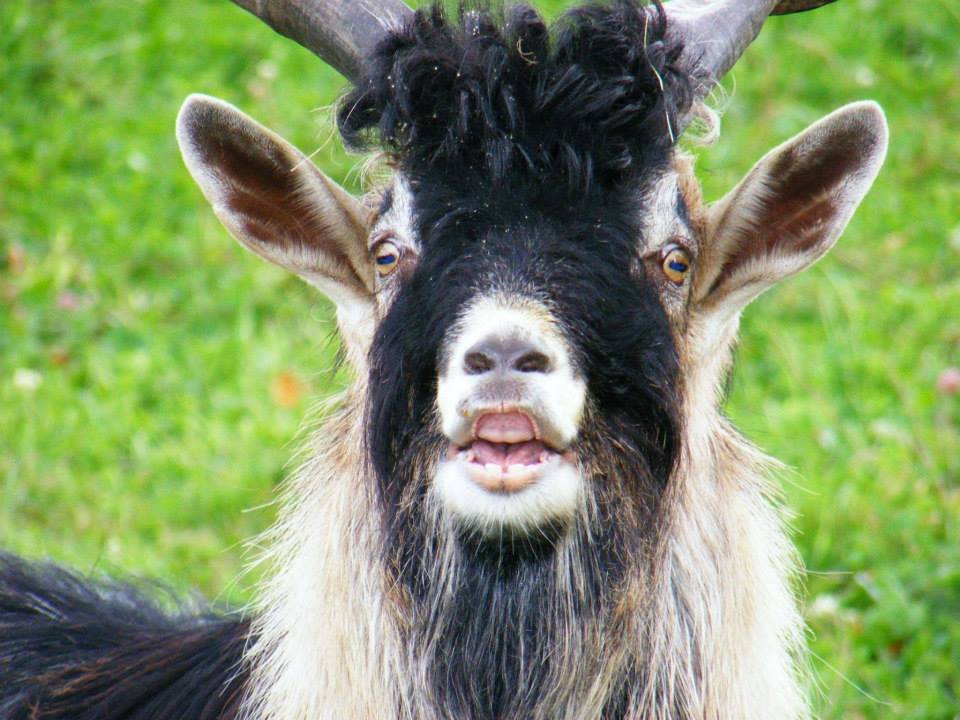 Notice: This guide is in no way a complete reference to all the care that your buck could need. There are several great resources available that can also guide you in the care of your buck. Above all else, remember to follow the advice of your trusted and experienced ruminant veterinarian. General Rules of Buck Ownership:
|
Kristin PlanteI am Certified Veterinary Technician turned goat farmer, homesteader and home-schooling mama. Thank you for following my journey. Archives
January 2024
|
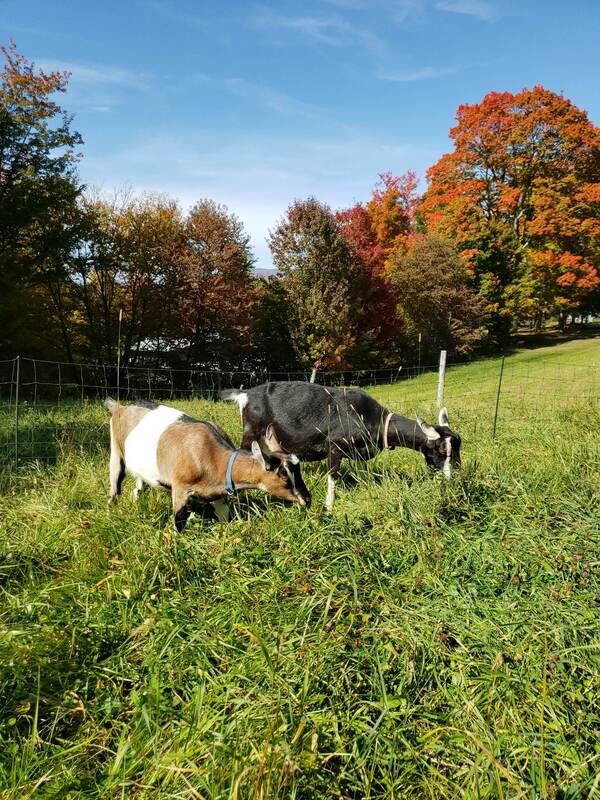
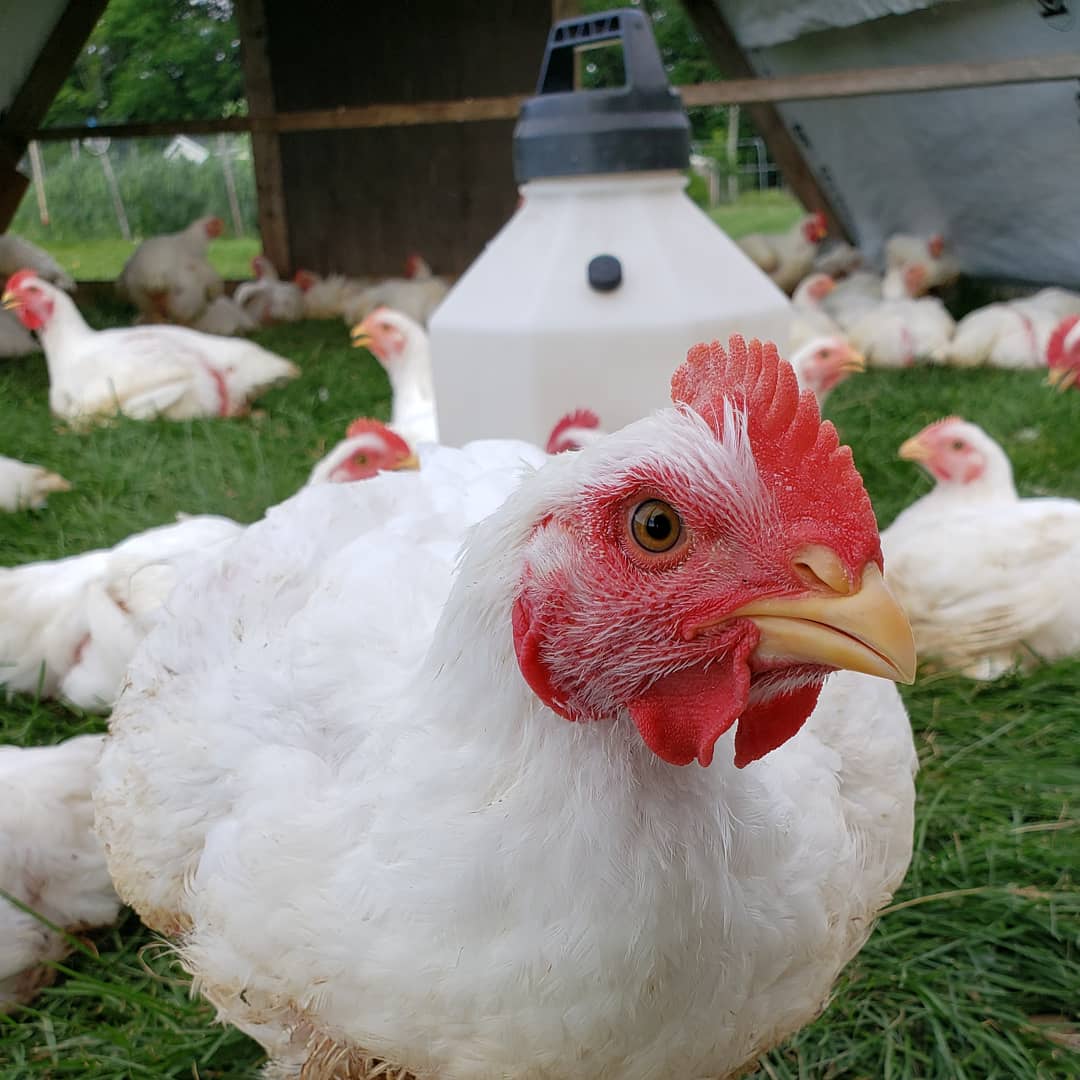
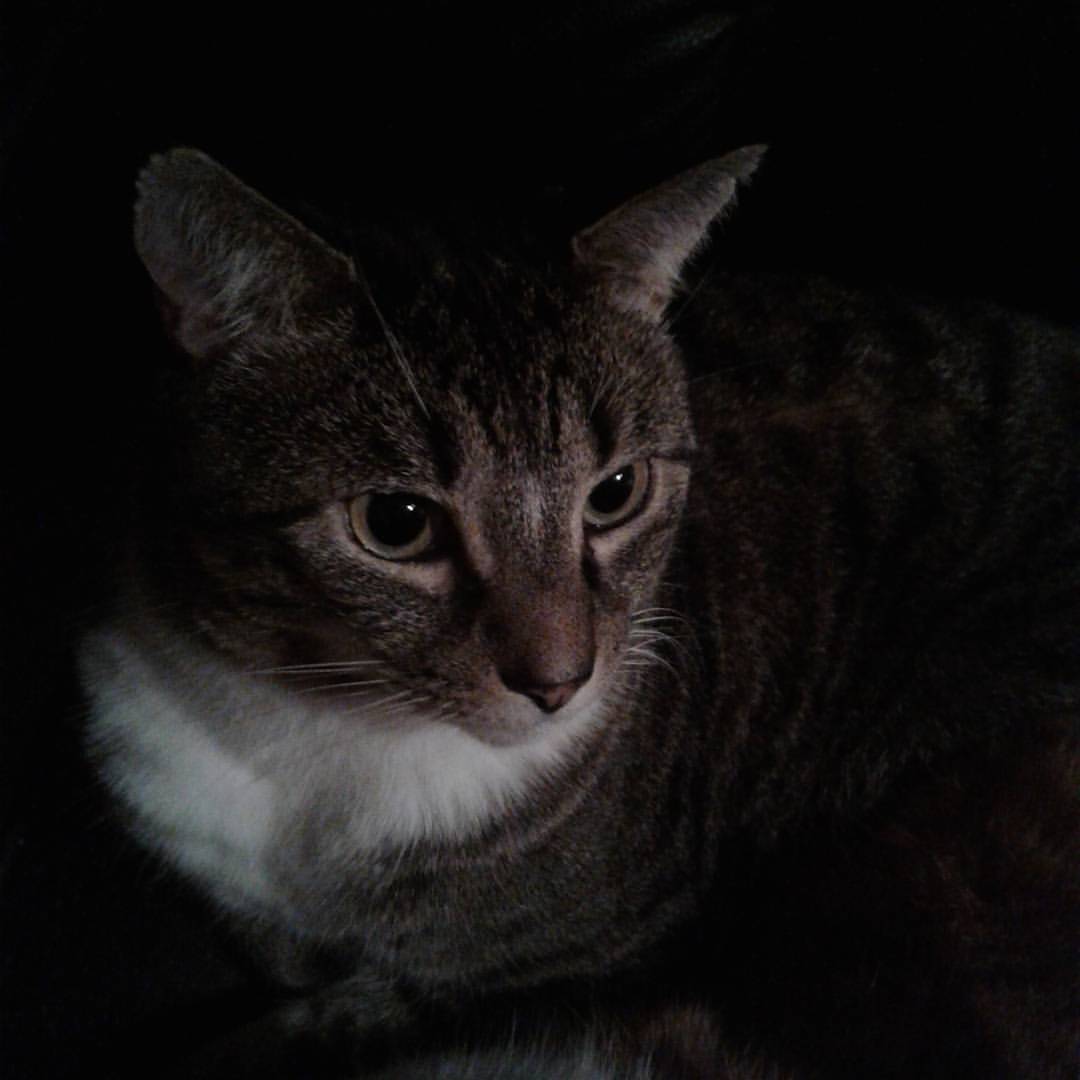
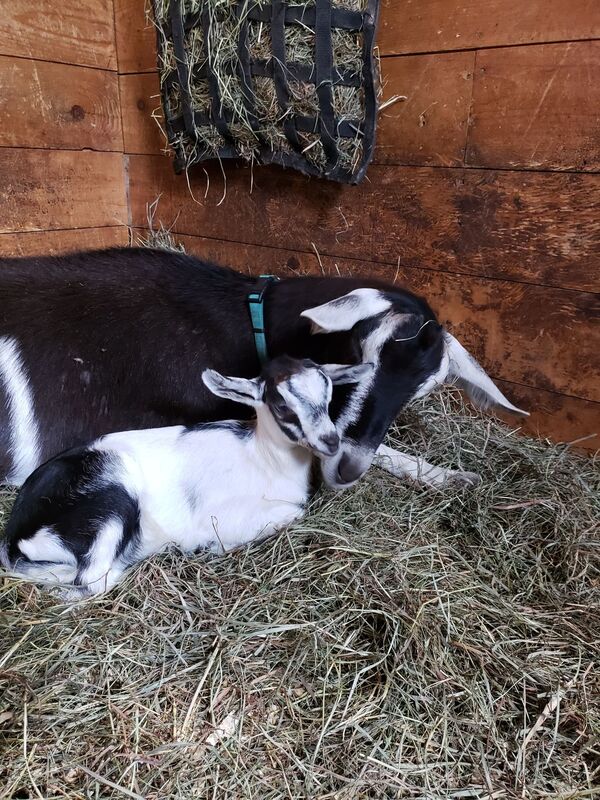
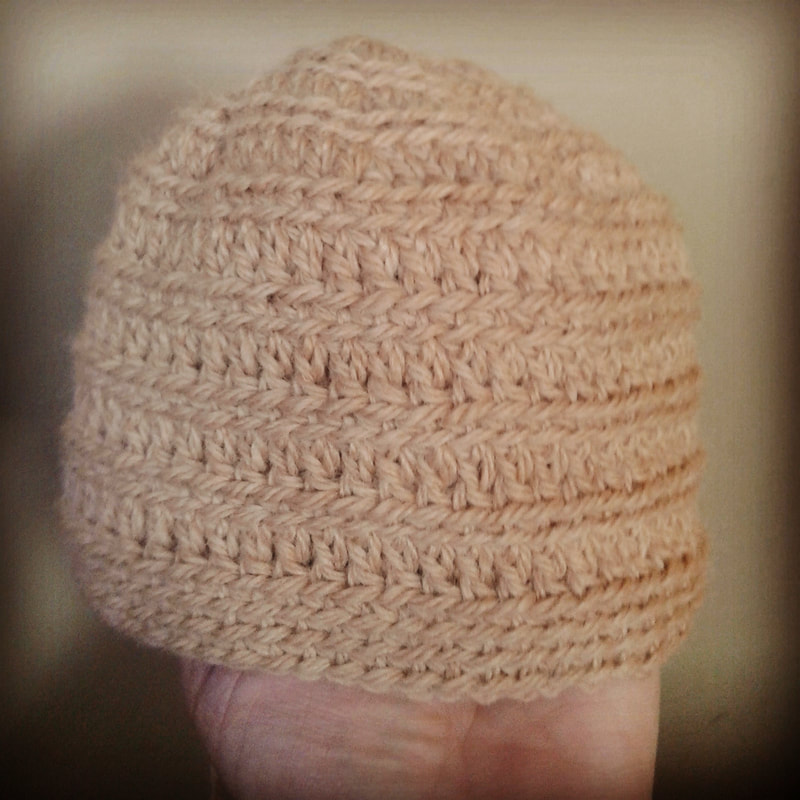
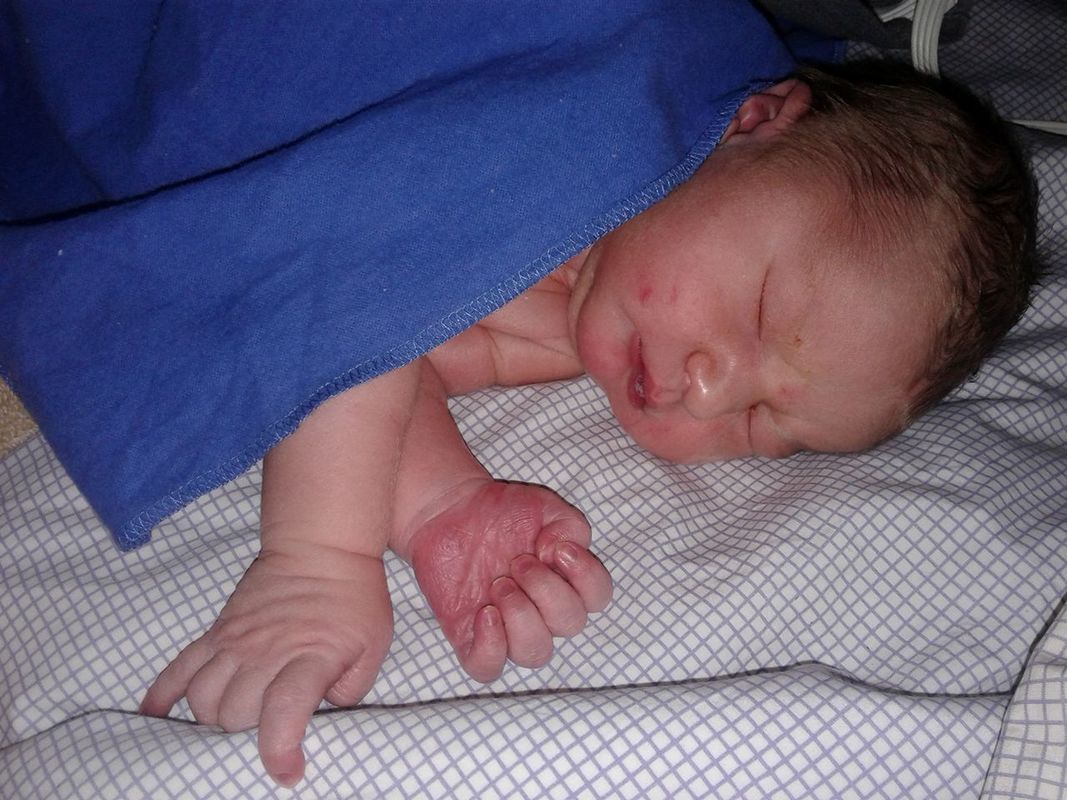
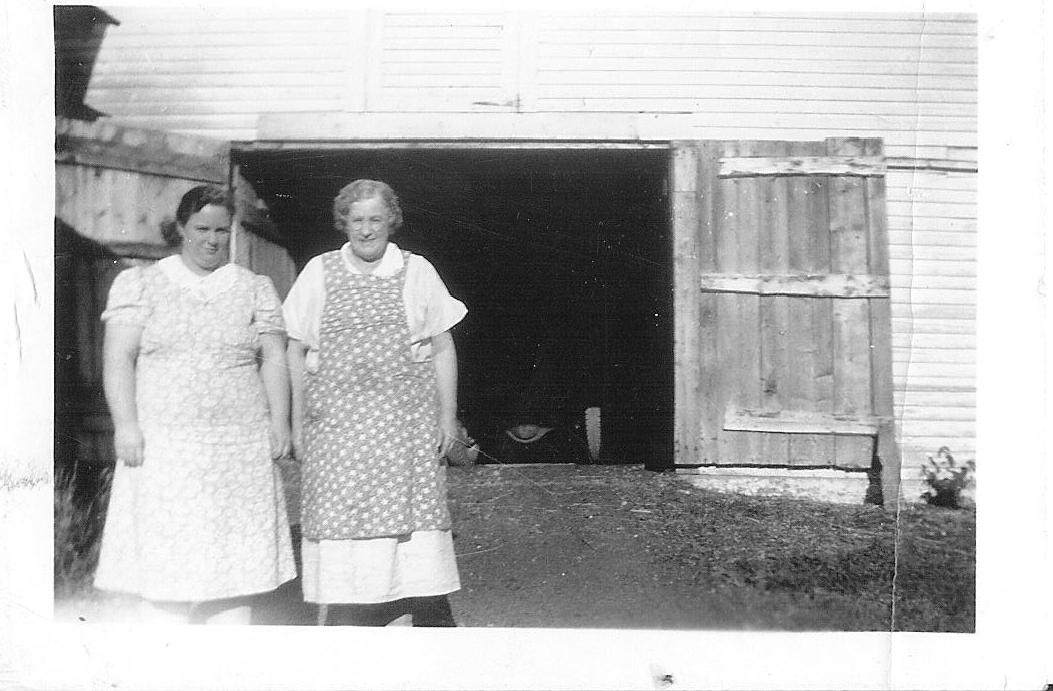
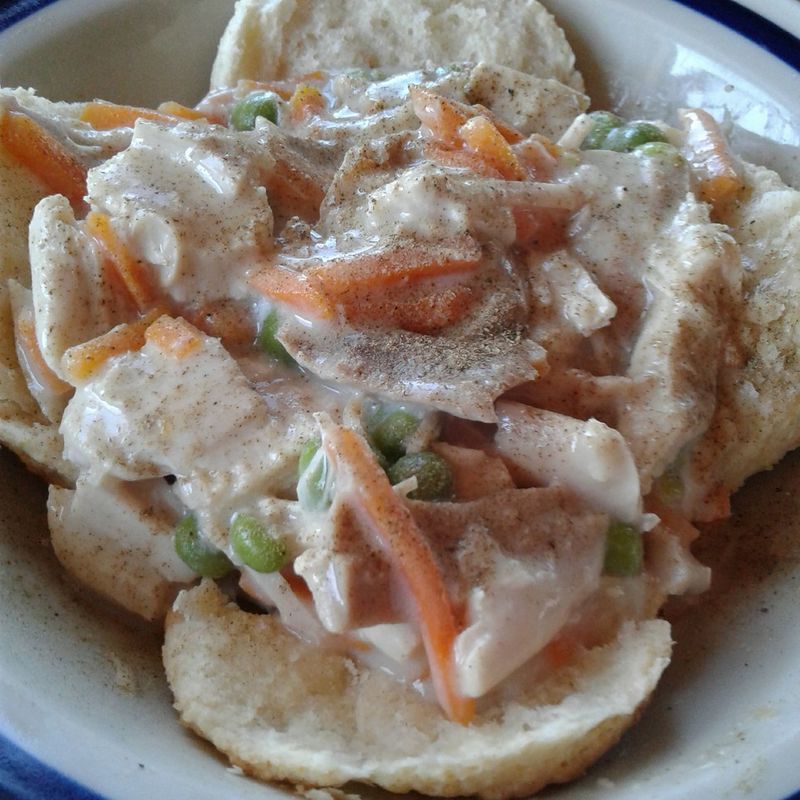
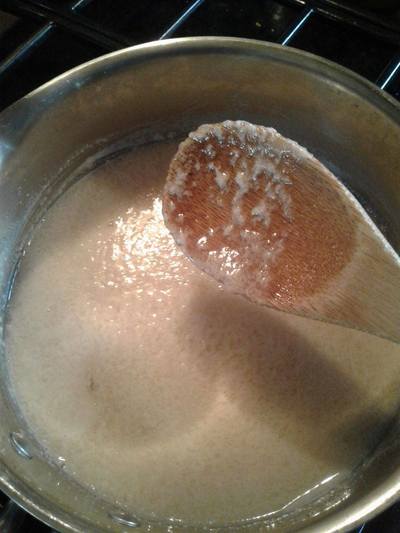
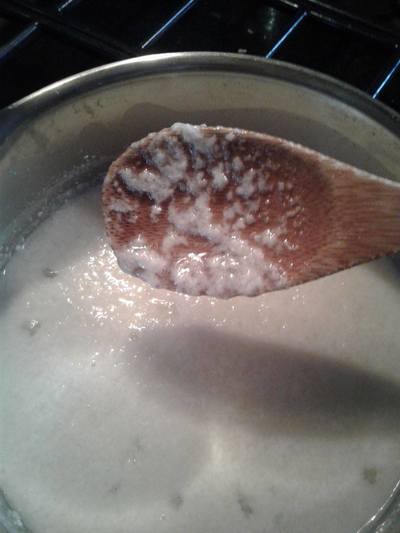
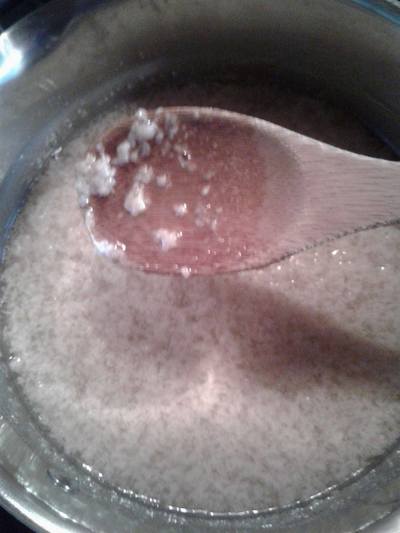
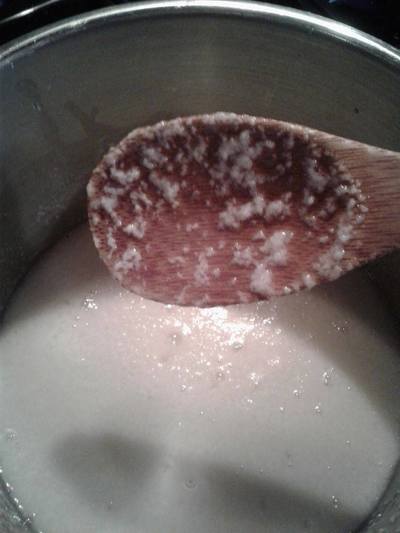
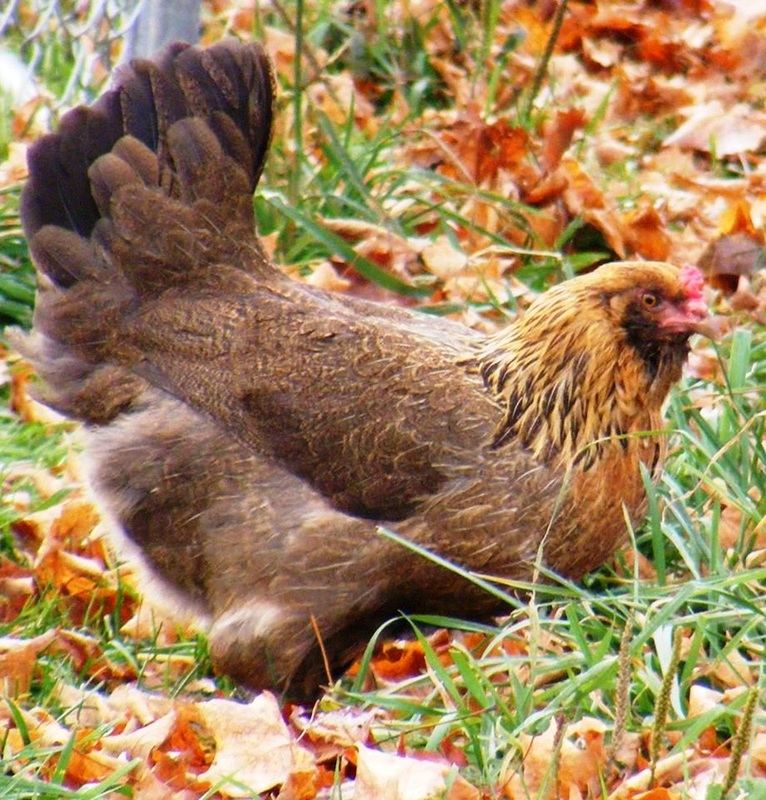
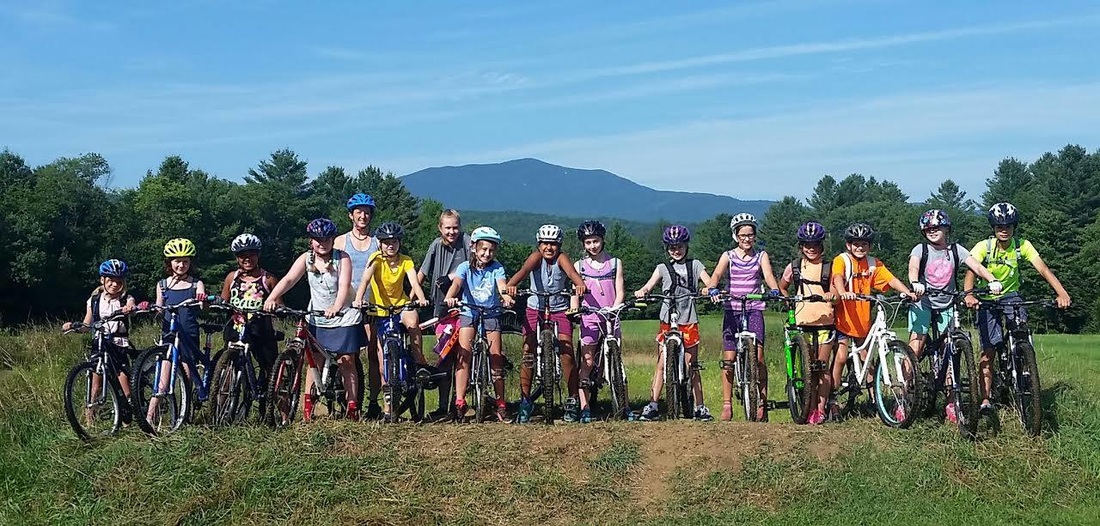
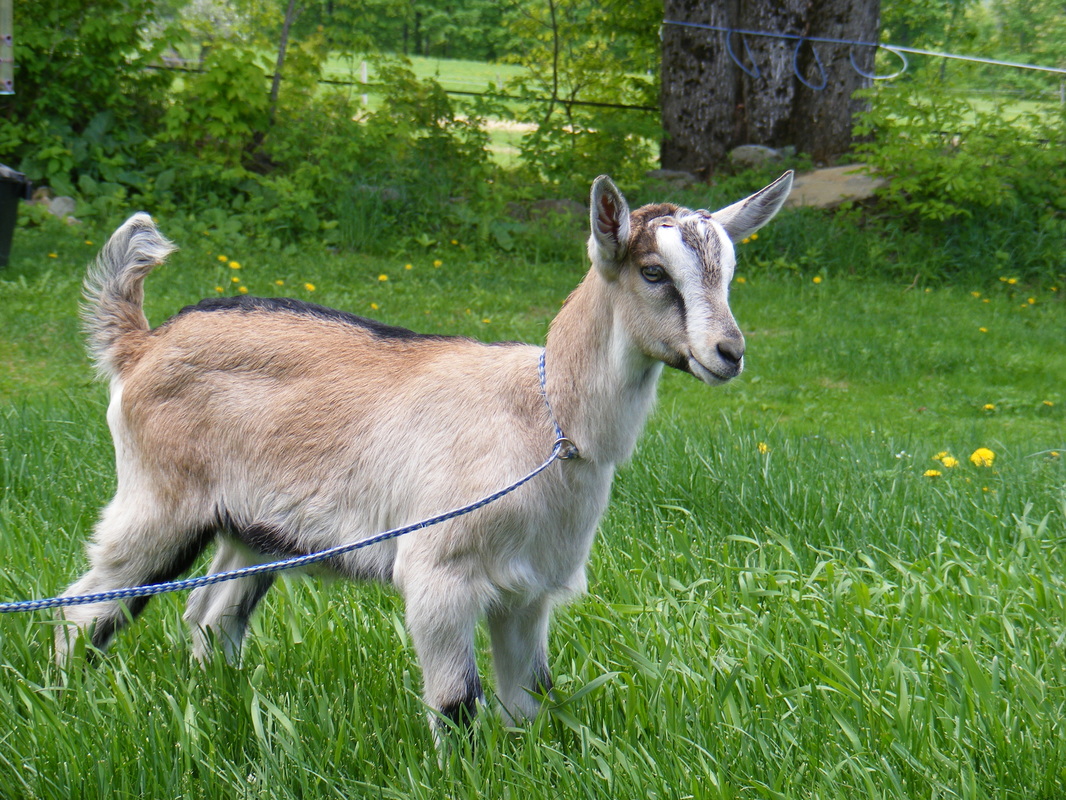
 RSS Feed
RSS Feed